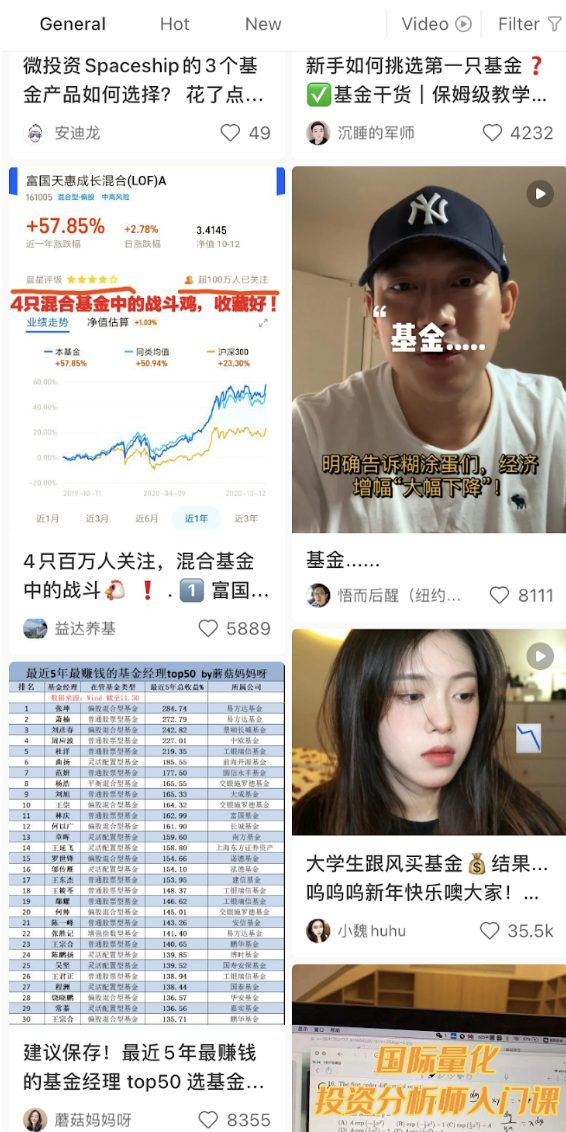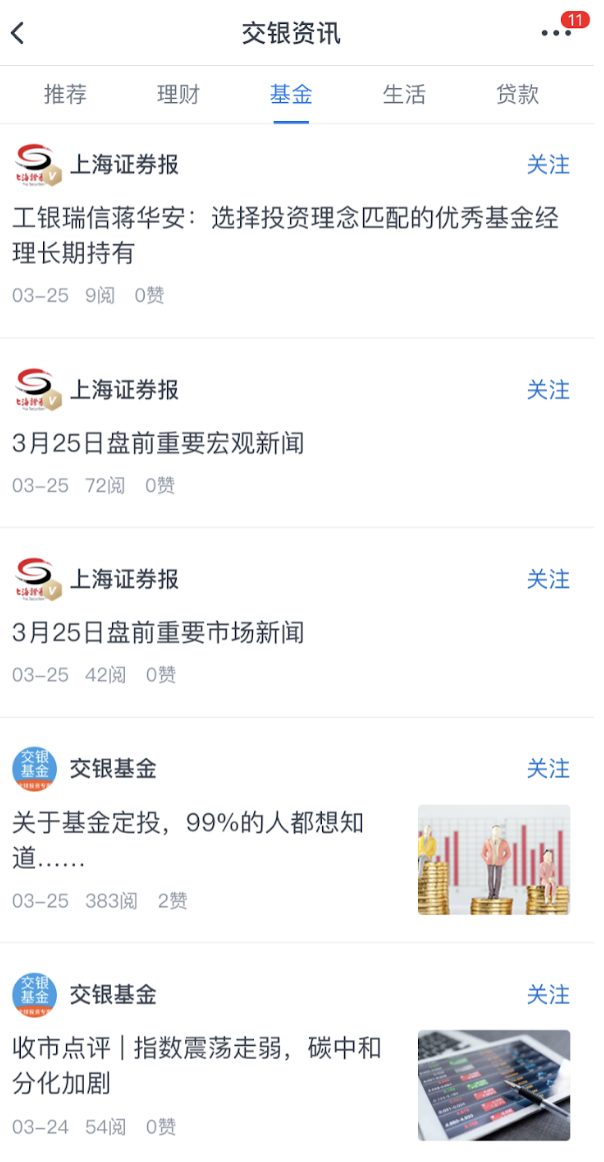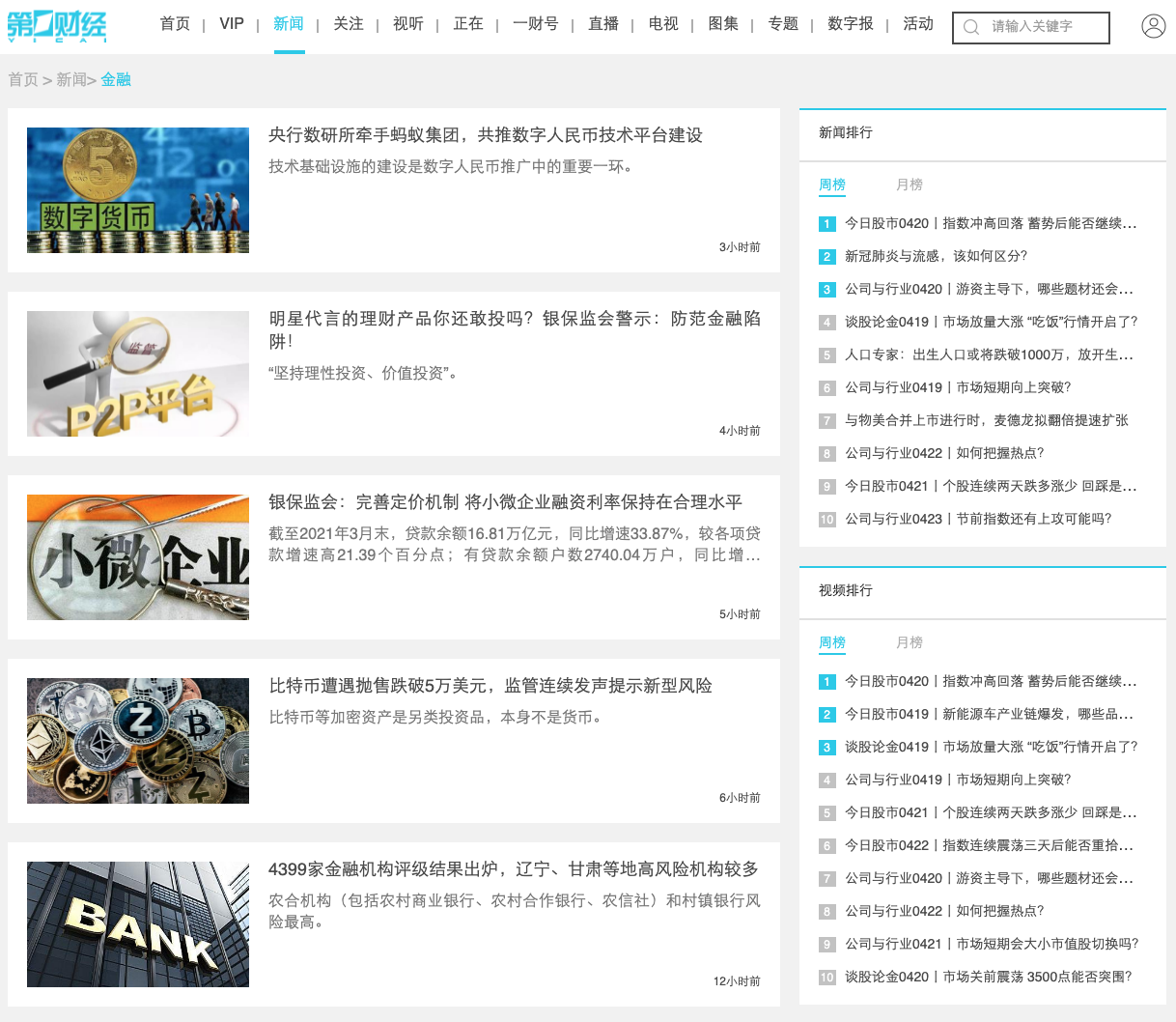“Financial news is a lot like a crying baby: First, there is noise and commotion as prices rise and fall. Next, we consider the obvious explanations, followed by the less obvious ones. After that, we’re mystified, so we speculate and hypothesize. The action comes first, and the narrative comes later — if it comes at all.”
Robert J. Martorana(2019)
1. Cognitive fit theory adapting on different information presentation format
Cognitive fit theory developed by Iris Vessey (1991), explains that the same information with different presentation formats will lead to different task performance for individual users. On social media platforms for e-commerce and community sharing, the content on RED is less formal compared with others such as journals and TV programs based on delivering the same topic. Take the nickname of fund invest as an example.
On financial TV programs or the finance section of the newspaper, these people are called ‘investors’. However, they are called ‘chicken farmers’ or ‘fund holders’ in a more entertaining way. Also, the writing tone on RED and TV or newspaper are very contrasting. On RED, the post thumbnails are designed based on market preference, aiming to attract a higher click rate. Online reviews are presented without any standard format (Chatterjee, 2001) . However, on bank websites or financial TV program sites, titles and subtitles are clear and incisive, without extra noises.
Different types of information presentation format leads to different performances by attracting different audiences. On RED, students with little understanding are the majority of the audiences.
They prefer finance content on social media than regular news media such as TV or newspaper which is regarded as ‘hard to comprehensive’ and tedious. According to Robert J. Martorana(2019) from CFA Institute, a finance professional with more than 30 years working experience, described financial news as “a crying baby”, coming up with noises and investors getting mystified.
The authors of these “crying baby” platforms are educated in finance or fund investment differently. On the
bank websites such as Bank of Communications*, as shown below,the articles are required to be written by professional bankers or cited from a professional source
such as Shanghai Securities News which was founded by Shanghai Stock Exchange in the 1990s, shown below. In contrast, there is no strict regulation in terms of authority and certificates for articles or authors on RED*
, users are free to express anything related to fund investment on it, even students
. However, they know the best way to arrange the presentation type for attracting more viewers to reach a maximized result of social media engagement rate. Ultimately, they are able to create a better influence on fund investment among entry level investors by using appropriate cognitive processes from given information.



Source: *yicai.com One of the biggest financial media in China
Source: *Fund News section on Bank of Communications website
Source: *RED search results of "fund"
Four RED influencers were selected for examples of this study. First two influencers only introduce themselves as a vlogger and a fund investment teacher.
They did not share any qualification related to fund investment while sharing ‘professional like’ posts with appealing thumbnails or humorous titles. However, the way their contents presented fits the taste of beginners, intriguing more followers and their invest behavior on fund. Since their qualifications are not clear, especially the influencer ‘Xin Yi Gu Niang’ who has a very diverse post categories, including ‘Nanny-like(super thorough) guide: It is good enough for beginners to learn fund investment by reading this post’ and ‘Guangzhou Vlog: Cost of fashion is cheap.’, it is not surprising that lots of doubts and criticism are targeting them.
However, it is not totally applicable for professionals to doubt all of the influencers on RED. Noticing that there are some qualified influencers posing similar content as amateurs, the post ‘Entry level of fund investment, this post is super thorough.’ also match the cognition of investment beginners in terms of the information presentation format. These influencers are regarded as qualified majorly because of their career background. As shown below, most of the influencers who are gratified with their experiences are very willing to mention it on their profile pages. For instance, as ‘Wu Er Hou Xing’ introduced, he worked as a politics journalist at the age of 19. At 21 years old, he became a futures trader of COFCO group which is a Chinese state-owned food processing holdings company, and he graduated with a master degree of finance in the US at 24 years old. These experiences help to build up his public image as a reliable finance influencer on RED. Yet, the real credibility is still needed for further verification.
2. Halo effect of social media influencers.
The halo effect usually appears in the early stages of cognition of things. At this time, our understanding of someone or something is still not deep enough, so we only focus on the external characteristics of things and connect them with other unrelated characteristics. When we have an overall impression of a person, we can easily think of his or her performance when doing other things. "Love me love my dog" is also a typical manifestation of the halo effect. On RED, profile page and profile pictures are the main sources of the first impression. The influencers will especially stress more on building up a public image through these two sources.
Some of the RED influencers introduce themselves highlighting their high education backgrounds and professional working experiences. What’s more, some of the users market themselves with fabulous appearance, which can attract more followers. With a firm professional background such as ‘Mo Gu Mama’ who works in the fund industry for 11 years, followers or other readers are more likely to fully trust her posts regarding the fund investment.
Ultimately, their content that is delivered to every potential audience according to the recommending algorithm on the app will firm their public image so that more people will follow them and believe them.
One of the biggest concerns of the information on social media is reliability.
Since it is hard to distinguish whether it is trustworthy or not, the profile introduction can also be fake in some cases. At this point, many investment beginners will be deceived by this and there is no wonder that professionals came up with doubts and questions. As the theory described, many people would believe in the follow-up content of these influencers with outstanding background because of a good first impression. However, no one has confirmed that the halo effect brought about by a good first impression will definitely lead to the reversion that goes against the first impression. Therefore, the research question about the content and influencers’ reliability also hopes to confirm or refute the above-mentioned macro speculation that the fund investment influencers on the "RED posts are not credible" talk. (Wu, 2021). What’s more, based on the investment experiences and the knowledge of investors, it is also able to test whether the investors who use RED are less experienced than other platform users, as the report (MobTech, 2021) suggested.
created with
WYSIWYG HTML Editor .